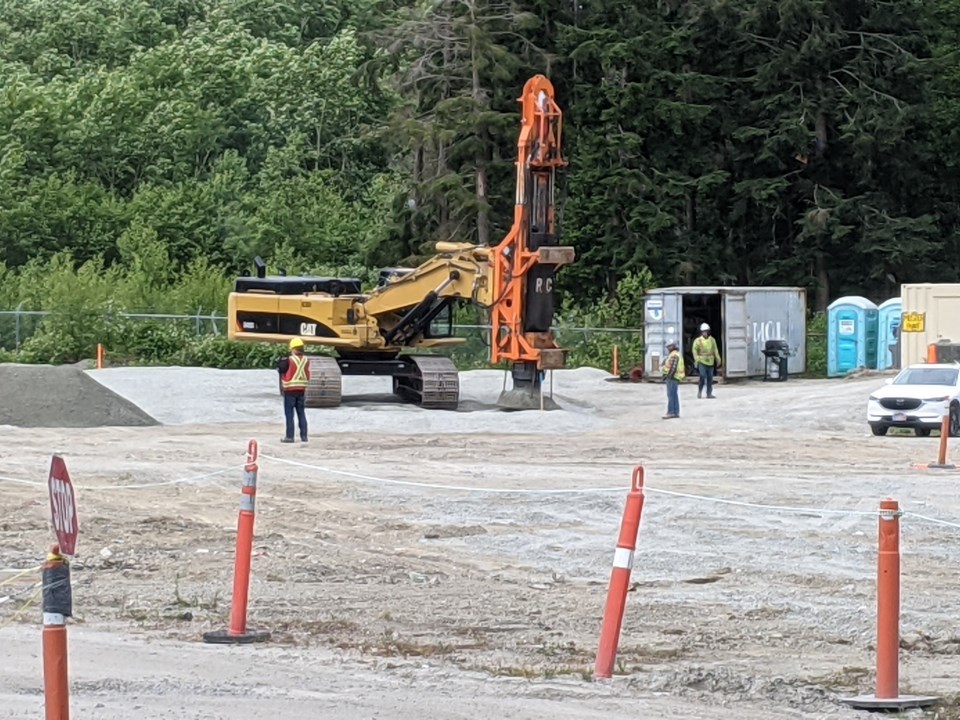While yet to be confirmed, Sunshine Coast Regional District (SCRD) staff say the recently completed contact water pond relocation appears to have extended Sechelt landfill’s lifespan to 2032.
When proposed, that project was envisioned as adding four years of operating space, taking the landfill’s life to 2030, but the result is an estimated six years of capacity stretch.
Exceeding expectations came at a price that also exceeded the project's budget. At the June 26 committee of the whole meeting staff were in a rarely witnessed position of seeking spending forgiveness rather than approval, as work costing $365,566 in addition to the budgeted $941,012 was completed as of May 20.
The committee recommended the upward adjustments to pay for work by three contractors involved in the relocation of the contact water pond from the active landfill footprint to the former public drop off area in the southwest corner of the property. The committee’s call is to be considered by the board at its July 10 meeting
A brief business case analysis on the project from staffer Marc Sole convinced the committee the work, which cost a total of $1.7 million for design and construction, was worth the investment. “Doing this project has protected taxpayers from $24 million in expenditures to haul waste off-Coast,” with six additional years of solid waste disposal possible locally, as the SCRD continues to consider what to do with the region’s garbage once Sechelt landfill reaches its capacity.
Staff cautioned elected officials that the extended lifespan won’t be confirmed until after the results of this year’s annual landfill survey and receipt of a liability letter from the province. Those are anticipated in early 2026.
Why the project went over budget
A report on the meeting agenda explained that “additional work” was done due to “unforeseen” project conditions. Seven items were identified as contributing to the larger price tag.
“The original design underestimated the required excavation and backfill volumes, resulting in significant increases to material handling and procurement costs," the report noted.
Also the volume of asbestos-containing material (ACM) encountered during excavation was 2.8 times higher than estimated. “This had a major impact on cost, as ACM requires specialized handling and disposal," the report detailed.
In addition, ACM was found where it had not been expected. Along with expanding the area where excavation was needed, more material to rebuild those areas was needed.
As part of those unexpected conditions, the scope of work for one contractor changed, adding labour and equipment hours.
With the expanded construction schedule, there were increased costs for construction and engineering administration.
“Excavation revealed deeper-than-anticipated grades, requiring additional work on ditches and culverts to manage surface water,” the report cited.
Finally, that document noted that, “due to the unforeseen volume of ACM and delays in project initiation, more engineering work is required to update landfill Design, Operations, and Closure Plan, Environmental Monitoring Plan, and detailed fill plans.”
Lessons learned
At the committee session, staff noted a pause to the work for presentation of a budget amendment request to elected officials was considered “but would have created contract risks and delays."
They noted actions were taken to “minimize” the cost overages. It was also stated there had been a review of how the project progressed and adjustments made to procedures to help avoid potential budget overspends on future projects.



